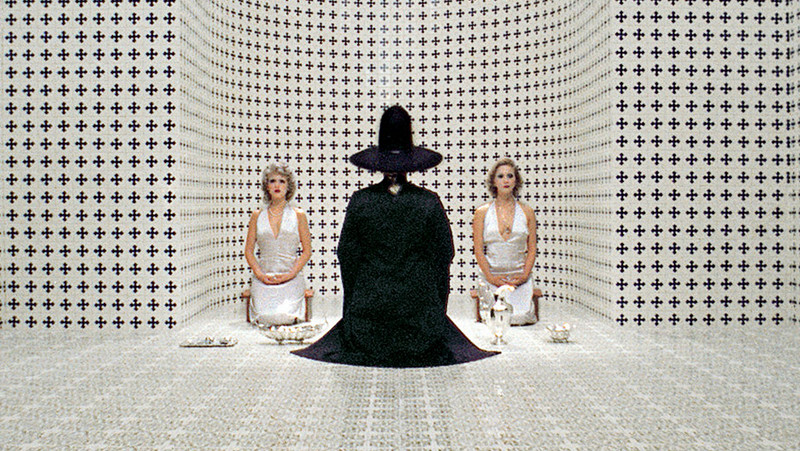
Transitioning from the tangible to the unimaginable, from the ordinary to the extraordinary, cinematic art often unveils those mysteries that remain beyond conventional perception. Films with unconventional, whimsical approaches and eccentric plots stand out from the crowd, blurring the boundaries of reality and transforming abstract ideas into tangible images.
But what makes these films so bizarre and unique?
These experimental creations, sometimes bordering on the absurd, aspire to be unique works of art. Their quirkiness is not limited to unpredictable plot twists or unconventional characters; it manifests in innovative approaches to filming, processing, and presenting material, as well as in the specific nuances of directorial vision. Eccentric films are an exceptional sphere of cinema, where abstraction, psychological depth, and often shocking avant-garde intertwine in an astonishing symbiosis.
In this article, we will lift the curtain on this unusual and intriguing world of eccentric films, attempting to understand their impact on cinema and reveal their special, sometimes hidden beauty. This journey into the world of eccentric cinema offers a unique experience, opening new horizons for reflection and exploration. Each such film is a kind of exploration of cinema itself, its possibilities, and boundaries. Their boldness, ambition, and often unfamiliar beauty change our understanding of what is possible in cinema.
Are you ready to take this step into the unknown?
1. Un Chien Andalou (Luis Buñuel, 1929)
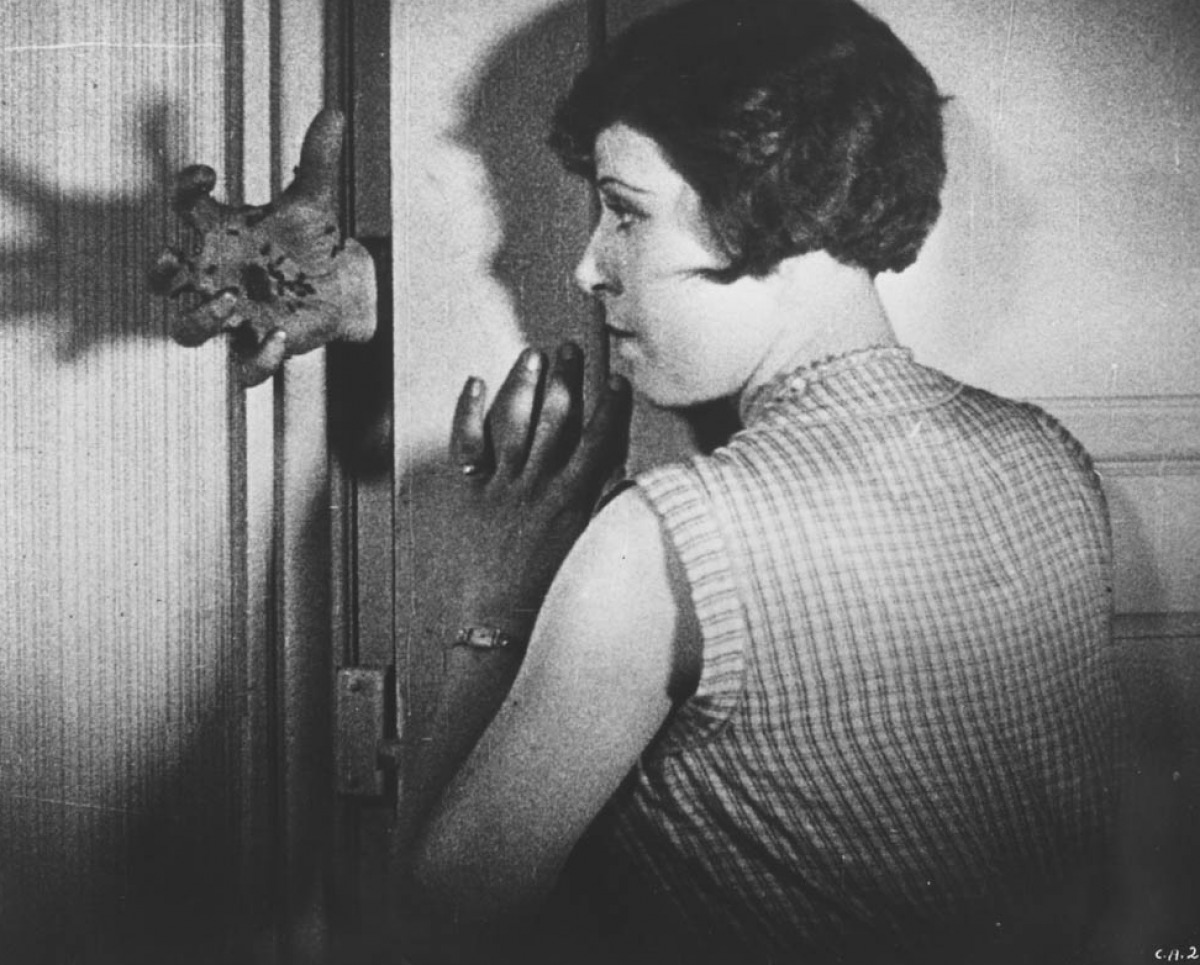
“Un Chien Andalou is the most beautiful film ever made.” – Ingmar Bergman
The greatest discovery of avant-garde cinema Un Chien Andalou, literally overturned the traditional understanding of filmmaking. It is a daring experiment by Luis Buñuel and Salvador Dalí, in which familiar dialogues are absent and replaced instead by a series of absurd and sudden visual images, creating a complex kaleidoscope of emotional and associative responses.
Un Chien Andalou is unique in its kind, showering viewers with a stream of surrealist visual poetry, refusing to follow any linear or logical narrative structure. The classic and, perhaps, most disturbing scene includes the moment when a woman’s eye is mercilessly slit by a razor–embodying the rebellious spirit of the creators, who sought to shock the accepted norms and values of the bourgeoisie. The journey within Un Chien Andalou is only beginning with this shot, and every subsequent frame presents us with a new puzzle to solve.
This short film masterpiece is considered a pearl of surrealist cinema, where traditional cinematic expectations are shattered by radical novelty and originality. Its ambitious desire to overturn standard viewer perceptions makes it unparalleled for analysis and discussion within the context of cinematic art. Un Chien Andalou may seem odd or even quirky, but its originality and uniqueness make it unforgettable. Having emerged over 90 years ago, it still keeps its relevance, serving as a source of inspiration and an object of study for film critics, art historians, and movie enthusiasts eager to understand and explore the multifaceted forms of cinematic expression. Immerse yourself in this amazing film and allow it to overturn your perceptions of reality and art.
2. The Fabulous Baron Munchausen (Karel Zeman, 1962)
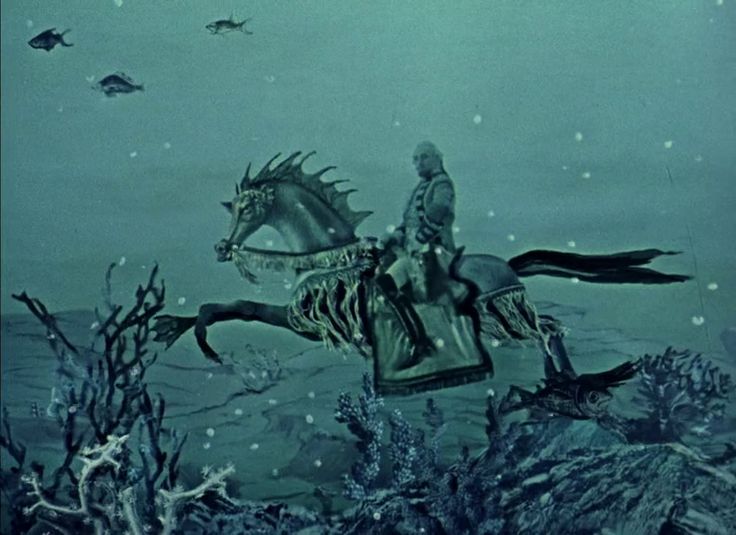
“The Fabulous Baron Munchausen is a film that is truly magical. It is a film that takes you on a journey to another world, a world of wonder and adventure.” – Steven Spielberg
If we investigate cinema for its ability to depict the incredible and extravagant, then Karel Zeman’s The Fabulous Baron Munchausen stands as one of the most important subjects of study, leaving its unique mark on the history of film. Zeman, a poet of visual effects, takes his starting point in the famous legends of Baron Munchausen, known for his wild adventures and fabrications. Zeman’s visual palette astonishes with its mastery, and he skillfully creates a refined atmosphere that resonates strikingly with the absurdity and fantasy of the Baron’s adventures.
The director blurs the boundaries between the real world and the world of animation, making a revolutionary contribution to cinema and urging the viewer to constantly rethink notions of reality. This unique approach provides the viewer with a sense of immersion in the film’s world, uncovering new horizons of perception. The virtuoso use of special effects and miniature scenography makes every frame a delightful work of art, immersing viewers from the very first scenes in a world of astonishing creatures, grotesque scenes, and incredible adventures.
However, The Fabulous Baron Munchausen surprises not only with its visual splendor but also prompts reflection on eternal themes. Between the Baron’s playful adventures, deep philosophical motives and views on imagination emerge. This is a film capable of touching the soul and igniting the imagination of its viewers. Today, when special effects in cinema have become commonplace, Karel Zeman’s The Fabulous Baron Munchausen remains a unique and inspiring work of art. It reminds us that the magic of cinema can arise not only thanks to modern technologies but also thanks to the talent and creativity of the director.
The Fabulous Baron Munchausen is a valuable artifact that unites the traditional approaches of European cinema with innovative and bold exploration of narrative form. Zeman introduces a new era in using visual effects, showcasing new horizons of manipulation of reality perception through film. This makes his work undoubtedly deserving of close attention for those seeking fresh experience in cinematography.
3. The Holy Mountain (Alejandro Jodorowsky, 1973)
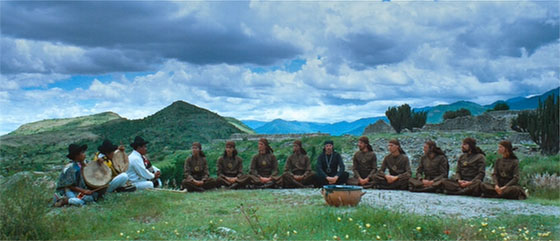
“The Holy Mountain is a film that is both visually stunning and profoundly disturbing. It is a film that is not for the faint of heart, but it is a film that is essential viewing for anyone interested in the power of cinema.” – Martin Scorsese
A shining example of avant-garde cinema, the film The Holy Mountain, shot in 1973 by the visionary of surrealism, Alejandro Jodorowsky, opens doors into the depths of human subconscious and cultural symbolism, leaving viewers in a state of complete awe and thoughtfulness. Forget about clichéd plots and predictability; this film will surprise you! At the center of Jodorowsky’s attention is Christ, freed from shackles, who finds himself in a modern city, among human vices, the cult of death and sex. On his way to the Holy Mountain, the hero meets seven companions, embodiments of the seven deadly sins.
This move allows Jodorowsky to discuss the sociocultural and ethical issues of his era, demonstrating the deep humanity and complexity of his characters. The goal of the journey is to reach the summit of the Holy Mountain, where immortal sages dwell, possessing absolute knowledge. This plot element brings a profound spiritual twist to the film, exploring humanity’s desire to know the absolute truth. The Holy Mountain offers the viewer a visual feast: from bright, psychedelic decorations to thoughtful details that adorn each frame, adding an extra layer of symbolism to the narrative, evoking associations with artistic masterpieces and religious texts. This film is an exception to the rules, an insightful and fearless challenge to traditional cinema.
The Holy Mountain is an eccentric and astonishing work of art, redefining the interaction of cinema with the audience. Although its multi-layered symbolism may require multiple viewings and careful analysis, Jodorowsky undoubtedly deserves admiration for the boldness and creative audacity he brings to his films, offering the audience genuinely unique cinematic experiences. If you are ready to immerse yourself in the atmosphere of mysterious and unusual cinema, then The Holy Mountain is a must-admire treasure for connoisseurs of outstanding cinematic art.
4. Eraserhead (David Lynch, 1977)
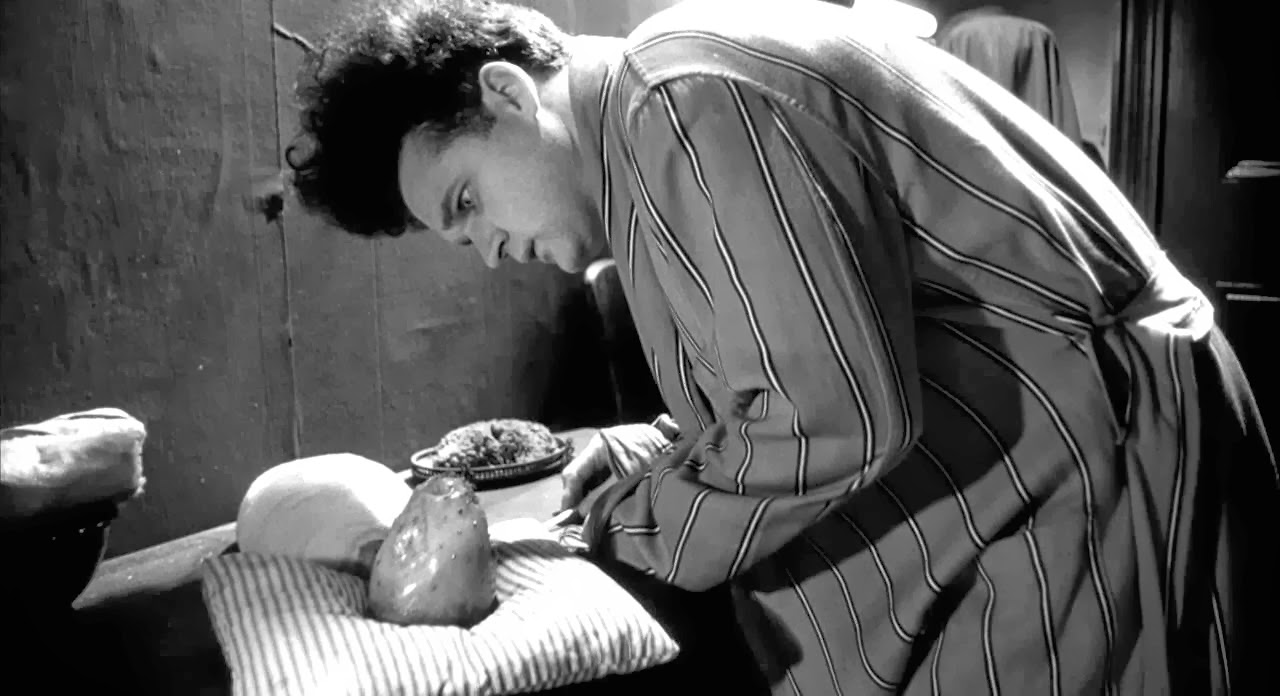
“Eraserhead is a film that is a work of pure genius. It is a film that is both visually stunning and emotionally resonant.” – Stanley Kubrick
Eraserhead is an absolutely unique milestone in the history of cinema, showcasing the unrestrained creativity and experimentation of David Lynch. This fantastic symphony became an unprecedented masterpiece, paving the way for a new kind of cinematic art. Defining the genre boundaries of Eraserhead is a task that encounters many difficulties. Lynch, a true virtuoso, weaves together horror, surrealism, and drama, creating a film that tirelessly seeks resonance within us with unsettling feelings of fear of the unknown.
The central character of the story is Henry Spencer, an ordinary worker in a dirty industrial megapolis, moderately charismatic and penetrating under the charming performance of Jack Nance. His psychological balance is threatened when he discovers that his casual girlfriend has become the mother of a biologically indeterminate creature – a monster that rejects all familiar needs but continues to emit alarming sounds.
The viewer is cast in the role of an explorer, endlessly deciphering this complex visual puzzle. Here’s the main virtue of the film – its ambiguity and ambivalence. As the frames unfold before the viewer, unknown worlds open to their eyes. The viewer finds themselves in a world where reality and fantasy intertwine in a stunning pattern, where nothing is superfluous, and every detail is woven into a mosaic of mysteries and symbolism. With one stroke, Lynch creates a world where strange creatures, amazing mechanisms, and mysterious images merge into a breathtaking cinematic art.
The film Eraserhead is a challenge for the viewer, requiring an open mind and readiness for new, unconventional experiences, underlining Lynch’s reputation as the creator of cult films and having a profound impact on emerging generations of filmmakers. This film playfully engages with the canons, demonstrating that cinema, like any art, knows no boundaries, only embodying strange, astonishing, but at the same time incredibly attractive ideas.
5. Tetsuo: The Iron Man (Shinya Tsukamoto, 1989)
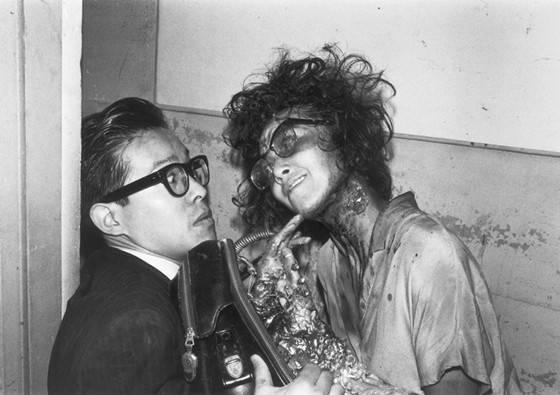
“Tetsuo: The Iron Man is a film that is both visually stunning and viscerally disturbing. It is a film that is not for the faint of heart, but it is a film that is essential viewing for anyone interested in the power of cinema.”- Terry Gilliam
Tetsuo: The Iron Man – A cult work of experimental cinema, which stands out primarily for its eccentricity and wit. Shinya Tsukamoto, as a director, has presented us with a dark but mesmerizing cinematic masterpiece, which can be identified as an archetype in the realm of bizarre and ambiguous films. Released in 1989, this film has forever left a mark in the hearts of viewers with its captivating storyline and unique visual aesthetics.
The film offers a nonlinear story where the main character, whose creativity is immersed in scrap metal, becomes trapped in a physical transformation. His body, as if obeying an unknown will, turns into metal. Tsukamoto uses a skillful combination of artistic elements and original special effects, transforming the protagonist’s body into an iron mutation right before the eyes of the viewers.
Shinya Tsukamoto’s meticulously crafted cinematography blends fragments of horror, science fiction, and avant-garde genres, making Tetsuo a prime example of avant-garde cinematic revolution. With the frightening and magnetic image of the hero’s metallic body, Tsukamoto provokes us to reflect on the boundaries of human essence and machine. Tsukamoto’s creation fearlessly touches on issues of industrialization and technological progress, highlighting their impact on the human psyche and body, turning the process of the main character’s transformation into an iron man into a metaphor for modern society.
Tetsuo: The Iron Man is an astonishing work that holds a special place in cyberpunk cinema and will forever remain in the history of filmmaking. Influencing the audience with its mastery of atmosphere creation and depth of subtexts, Tsukamoto has left a significant mark on subsequent works in this direction. A must-watch for fans of cyberpunk or connoisseurs of non-trivial cinema, Tetsuo will provide a unique experience far removed from ordinary Hollywood blockbusters.